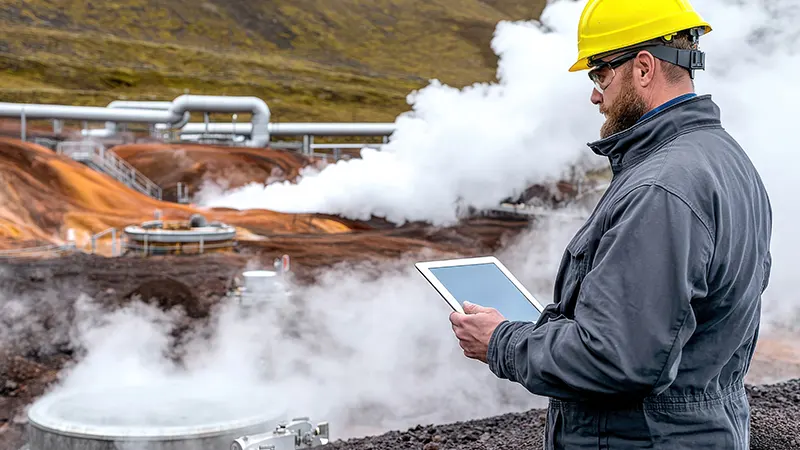 Massey University scientists are leading a major new research project in partnership with NASA to monitor geothermal fields in New Zealand from space.
Massey University scientists are leading a major new research project in partnership with NASA to monitor geothermal fields in New Zealand from space.
The project, monitoring vegetation-geothermal interactions from space and airborne platforms, is part of a US$5.6mn government investment into five NZ-NASA Earth observation projects, announced by Science Minister Shane Reti and Space Minister Judith Collins.
The Massey-led project will receive just over US$1mn from the Catalyst Fund. It is led by Associate Professor Gabor Kereszturi from the School of Agriculture and Environment, who also works with Massey’s Volcanic Risk Solutions centre.
The goal is to use advanced space technology to monitor the environmental health of geothermal systems. By combining thermal imaging (to track surface temperature), hyperspectral imaging (which analyses light reflected from the surface), and radar sensing (using microwave signals), the team aims to study how geothermal activity affects nearby plant life.
Geothermal regions like Taupō, Rotorua, and the Bay of Plenty are known for their rich plant ecosystems, which are very sensitive to changes in heat and toxic metals—both signs of geothermal activity. These changes can now be seen from satellites orbiting Earth.
The team is working with experts from Victoria University of Wellington, IIT Bombay in India, and NASA’s Jet Propulsion Laboratory and Ames Research Center in the US. They will use existing satellite technology, including ECOSTRESS and EMIT (on the International Space Station), and Sentinel-1 from the European Space Agency, which regularly gather data from space.
This research will help develop new data analysis systems for geothermal exploration. New Zealand is the first country to try this method, which, if successful, could be used worldwide to support geothermal, volcanic, and environmental monitoring.
A unique aspect of the project is its integration with Mātauranga Māori—Indigenous knowledge. The aim is to combine high-tech monitoring tools with traditional environmental understanding, helping Māori protect the land (whenua) and boosting NASA’s Surface Biology and Geology mission.
Gabor Kereszturi said, "In this exciting collaboration with NASA-JPL, our project ambitiously aims to roll out a new non-invasive, space-based tool to map geothermal systems across New Zealand and assess their 'health' through plant activity."
College of Sciences Pro Vice-Chancellor, Ray Geor, added, "The fact that we are the first in the world to do this research, and collaborate with NASA to do so, is a great achievement... It is a testament to the quality of the research we do at Massey."
